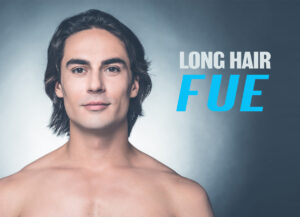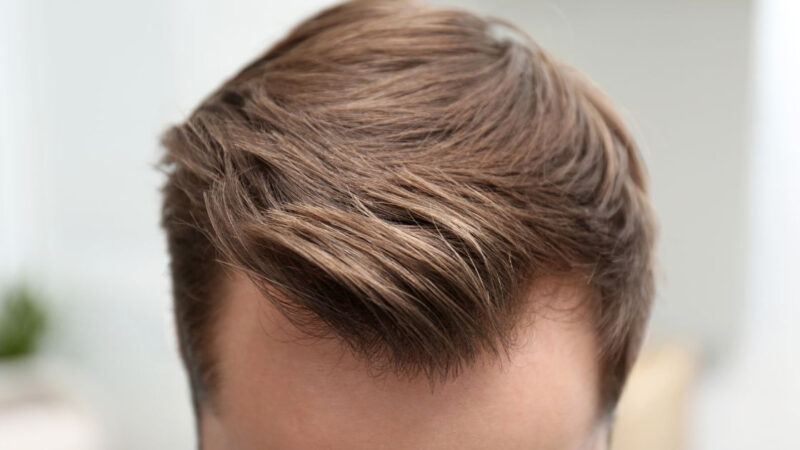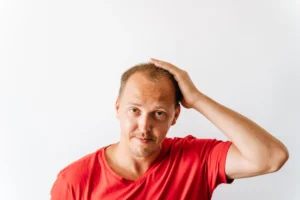It’s extremely important to keep in mind that hair restoration is a medical art. Medical art combines medical knowledge, mastery of current surgical skills and techniques as well as a keen eye enabling the accurate reproduction of what occurs naturally. Many prospective hair restoration patients assume that artistic ability is a given resulting from education and practice of established surgical techniques. Art and surgery are separate skills and this must be taken into consideration when evaluating a doctor for your hair restoration surgery. Unfortunately, a large part of Dr. Cole’s practice consists of repairing patients who have fallen victim to doctors with little or no artistic sensibilities.
HAIR TRANSPLANT ART ILLUSTRATION
To illustrate the critical importance of the artistic component of hair restoration surgery, imagine with me for a moment the quality of result an art restorer would produce if he followed the methodology of a strip hair restoration doctor. After preliminary preparation, the art restorer would carefully remove a strip of paint canvas including the paint layer. He would then utilize the correct colors of the original paint material to touch up the damaged area of the painting. With a hair restoration strip surgery, the strip is removed, dissected and the unused tissue is discarded. Nothing is placed back in the donor area and the edges are drawn tight and sutured. Even if there were no scars at all, this procedure causes distortion of hair direction and a loss of the naturally occurring gradation of hair shaft diameter. This gets worse as strip surgeons boast of mega sessions above 8,000 grafts. This requires the removal of a wider strip which results in even greater cosmetic problems for the donor area.
Our patient who came to us for strip scar repair surgery on October 4th, 2012 illustrates (see video) how strip surgery disfigured his natural hair shaft diameter gradation and hair direction. His hair in the back abruptly changes from coarse to fine. His 7mm hair length hides his relatively fine scar and the unnatural change in his donor hair direction. With his head shaved down, these cosmetic problems become obvious. In light of the contemporary popularity of short hairstyles, even a good strip scar is unacceptable to the vast majority of patients. Strip surgery often does a decent job of providing grafts for balding areas of the scalp, but at its very best, it solves one problem while creating another. Strip scars can, and often do widen. Some have placed hope in the trichophytic closure as a means to improve the appearance of strip scars. In Dr. Cole’s opinion, trichophytic closure is a strip salesman’s gimmick. Trichophytic closure transects hair follicles. Hair that is purposefully bisected to create a trichophytic closure commonly won’t survive. Dead hairs will sometimes stay in place for a time, while others can become ingrown developing unsightly pimples.
TECHNOLOGY, SURGEON SKILLS, AND EXPERIENCE
Hair transplant tools and associated technologies have moved forward considerably over the last 10 years. FUE in the right hands with the finest surgical tools provides great and numerous advantages for the patient undergoing hair restoration.
- There is no strip scar.
- The doctor is not limited to using only hair within the relatively small strip.
- The doctor can use the finer hair available in the greatly expanded resource of donor area to create the most natural appearing hairline possible.
- CIT is a far less invasive procedure than strip surgery.
- The current state of the art hair restoration surgery includes PRP and ACell. Used in conjunction with CIT, PRP and ACell have demonstrated quicker healing, accelerated new hair growth, donor hair regeneration, and minimized hypopigmentation at the donor sites.
The first example (see video) represents a relatively “good” strip scar. The next example is a severe strip scar. The following example illustrates one doctor’s abysmal lack of artistic ability.
There are only a handful of doctors in the world who have the skills to attempt such a repair. Dr. Cole here in Atlanta is one of them. So far our patient pictured here received 7,976 grafts, mostly from the chest and beard area. Our patient considers himself a work in progress and returns every year for additional grafts while he continues to enjoy a major improvement in his appearance.








